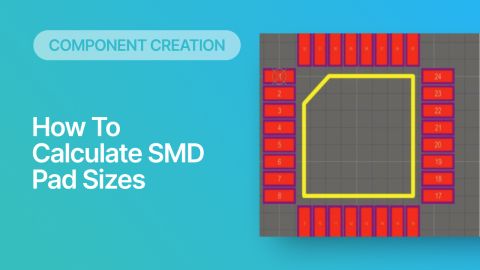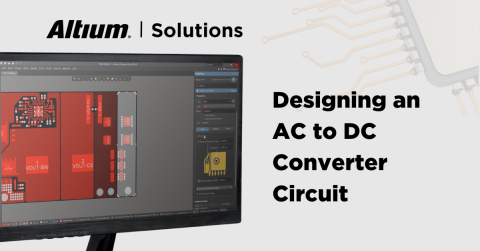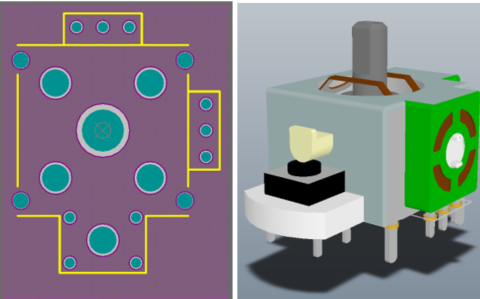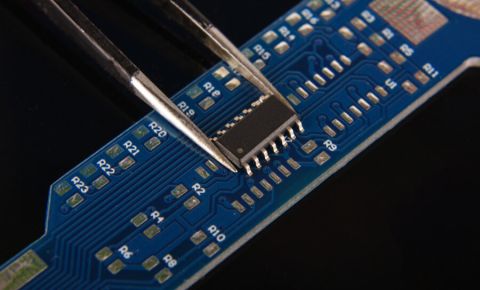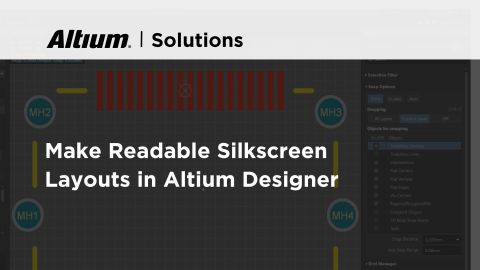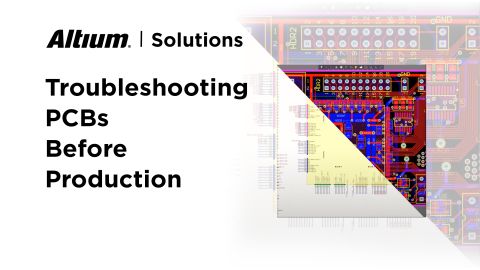Everything You Need to Know about Conformal Coating

Conformal coating is a lightweight material applied to PCBs that acts as a protective layer. It protects circuit boards and components against various environmental factors, including heat, humidity, moisture, ultraviolet light, chemical contaminants, and abrasive materials. Conformal coatings also have thermal and electrical insulation properties to help manage your circuit's operating characteristics.
The key benefit of applying a conformal coating is that the protection will extend your circuit board's life and reduce component failure rates due to environmental factors. This protection consequently improves the reliability of your device, reducing costs associated with replacing hardware that has prematurely failed.
There are several types of conformal coating, and each has unique characteristics, properties, and benefits. This article aims to explain precisely how conformal coating will benefit you and which type is the best option for your specific application.
Conformal Coating Types
Every kind of coating has unique properties and characteristics suitable for specific applications. Here we look at the market's five main conformal coating types: Acrylic, Silicone, Polyurethane, Epoxy, and Parylene-based.
Acrylic-Based Coatings
The main characteristics of Acrylic-based conformal coatings are their low cost and ease of application making them ideal for hobby electronics. You can apply this coating using various techniques, including dipping, spraying, or brushing. They are also simple to remove using a non-aggressive solvent like isopropanol if the circuit board needs to be modified or repaired.
Acrylic resins protect against moisture for the long term and resist ultraviolet (UV) exposure well, making them ideal for circuit boards exposed to direct sunlight.
The downside to this affordable and practical solution is that the coating offers little or no resistance to solvents and is adversely affected by temperatures above 250 degrees Fahrenheit (125 degrees Centigrade). These constraints can limit the suitable applications for this type of coating.
Silicone-Based Coatings
The main characteristics of Silicone-based conformal coatings are their retained elasticity following curing, which offers good protection against the effects of vibrations and high mechanical stress levels on circuit boards. In addition, silicone provides excellent resistance against moisture and corrosion and good resistance to chemical contamination. The material also has good adhesion properties with PCB materials aiding application.
The key benefit of this material is the protection it offers across a wide range of temperatures. For example, circuit boards may either include components generating high thermal loads or the board is in an extreme temperature environment. The coating can easily manage temperatures up to around 400 degrees Fahrenheit (200 degrees Centigrade).
The downside to this flexible solution is that the coating has a significantly higher thermal resistance than other coating types, which can impede heat dissipation by acting as a thermal barrier between the circuit board and its mounted components.
Polyurethane-Based Coatings
The main characteristics of Polyurethane, or urethane, conformal coatings are their toughness, adhesion, and strong resistance to solvents and other chemical contamination. Consequently, this material protects circuit boards exposed to harsh environments. The US Food and Drug Administration (FDA) has also approved Polyurethane for medical devices.
The downside to this robust protection is that the curing process requires either controlled heating in an oven for an extended period or exposure to UV light, depending on the formulation of the Urethane-based material. As a result, this curing process is more suited to commercial manufacturing than low-volume prototyping or hobby boards.
Another downside is that the coating is difficult to remove once applied, preventing subsequent modifications or repairs to the board.
Epoxy-Based Coatings
Epoxy-based conformal coatings produce a tough and smooth finish resistant to chipping or cracking, providing good protection against abrasion and moisture ingress. The key benefit of acrylic resins is their protection against chemical contamination, including solvents, which are ideal for use in harsh industrial environments.
One downside to this coating type is the complexity of the preparation and application of the epoxy material. Epoxy is a two-part material that must be mixed immediately before the application due to the very rapid curing time, typically measured in minutes. This preparation and application process requires specialist equipment to perform the mixing stage, apply the material using dipping, spraying, or brushing techniques, and remove any unwanted residue before it cures.
Another downside to epoxy-based material is that it cures to form a tough coating that will not offer flexibility if the circuit board moves or flexes due to thermal expansion and contraction or externally applied mechanical forces. This rigidity can translate into differential movement between the board and the coating, causing the application of shearing forces to any component or wiring that passes through the coating for attachment to the board using a solder joint. Furthermore, this toughness also prevents subsequent modifications or repairs to the board.
Parylene-Based Coatings
The main characteristics of Parylene-based conformal coatings are their low thermal expansion and high dielectric strength for specialist applications. In addition, it offers good resistance to chemical contamination and abrasion over reasonable temperature ranges. The US FDA approves this coating for use in medical applications.
The main downside to this coating material is it requires application using Chemical Vapor Deposition (CVD) technology, making it impractical for most non-commercial or low-volume circuit board developers. However, where this technology is available, the coating does not require curing, making the process fast and ideal for high-volume production.
Conformal Coating Considerations
Thermal Properties
The primary consideration when choosing the suitable conformal coating material is the worst-case operating temperature of the circuit board. The maximum temperature can limit which conformal materials are ideal for use or require reconsidering thermal management strategy to reduce temperatures to the acceptable range of the preferred coating type.
Another constraint is the thermal properties of the coating material and its impact on the board's thermal management solution in terms of interference with heat dissipation rates and paths of thermal energy flow and alteration of expected thermal expansion properties. For example, some conformal coatings are highly insulating and can retain heat, while others are more thermally conductive and can dissipate heat more effectively. The thermal properties may necessitate changes to the placement of components or the inclusion of additional thermal management solutions.
Environmental Properties
A further constraint is the operating environment of the circuit board regarding the presence of moisture, abrasive particulates, chemicals, including solvents, or other substances that can affect the circuit board and its components.
The physical properties of the coating material and its impact on the board's performance when subject to operating stresses and vibrations. A rigid coating that does not move with the board will cause mechanical stresses where any object is held by both, including component legs and wires, soldered to the board. This may necessitate changes to the design of the board or its enclosure to manage the impact.
Application Properties
Conformal coating is typically applied using dipping, spraying, brushing, or vapor deposition techniques. The most appropriate method will depend on board size, component types and placement, production volume, and budget. For small production quantities, brush or spray can application is usually the most practical method.
Another consideration in coating choice is the ability of the coating material to adhere to the board substrate. Circuit boards are available in a range of substrate materials that will affect the adhesion of the coating materials. In addition, the cleanliness of the board will also affect adhesion; using cleaning techniques such as solvents or an ultrasonic bath before applying the conformal coating can reduce the risk of adherence issues after application.
Once you've chosen your conformal coating material, the next consideration is coating thickness requirements. This decision requires balancing the benefits and drawbacks of a thin or thick coating. For example, a thinner conformal coating reduces the risk of cracking or creating mechanical stress points due to differential movement. Still, it may not offer sufficient protection against moisture or chemical contamination that a thicker coating would offer.
Another consideration for coating thickness is the thermal expansion coefficient. This parameter will differ for each coating type and can vary dramatically between brands. The coating's coefficient of thermal expansion can be an issue if your board experiences significant temperature cycling and the coating is not well-matched to the board. This situation can lead to premature component failure due to mechanical stresses. Again, each coating type will have a recommended thickness, typically in the 25 to 250 micrometer range.
Designing for Conformal Coating
Including the conformal coating specification as part of the electrical design of the circuit board offers benefits when it comes to managing the manufacturing process. Tools such as Altium Designer within Altium Develop allow the specification of the conformal coating to be an integral part of the circuit board design. This feature allows you to share the details with a manufacturing partner as part of the design review using the Altium or other data export routes, depending on your chosen toolset.
You can learn more about this process by viewing the video accompanying this article.
Conclusion
Applying a conformal coating to your circuit board is essential to protect your device from its operating environment, reducing failure rates and prolonging its working life. However, choosing the most suitable coating material requires balancing the protective properties of each type against your needs and the practicalities of application. For example, some materials are only suitable for commercial mass production, while others are ideal for hobby board developers with a tight budget and limited facilities.
To help with this decision-making, Altium Develop allows you to create a board layer for the conformal coating and specify which coating material should be applied to which board areas. This information can be easily shared with the board manufacturer during the design process to identify potential issues and resolve compatibility problems.
Whether you need to build reliable power electronics or advanced digital systems, Altium Develop unites every discipline into one collaborative force. Free from silos. Free from limits. It’s where engineers, designers, and innovators work as one to co-create without constraints. Experience Altium Develop today!

